Hey photography enthusiasts and history buffs! In this post, we’re delving into the fascinating story of the world’s largest camera – the ‘Mammoth’ Camera. This colossal creation was built to capture a single, panoramic photograph of “The Alton Limited” train, and it’s a tale that showcases the incredible ingenuity of the early 20th century.
“The Alton Limited” train, constructed in Pullman, Illinois in 1899, was famous for its uniform and symmetrical design. Its builders wanted a single panoramic photograph to showcase this exceptional train, and so they commissioned photographer George R. Lawrence to take the shot. J. A. Anderson was tasked with constructing the gigantic camera.
But why did the Chicago & Alton Railway spend a whopping $5,000 (a fortune in those days) on a camera that would only be used once? Well, it was all about pride and marketing. The company detailed the story in their pamphlet, “The Largest Photograph in the World of the Handsomest Train in the World.”
It took two and a half months to build the camera, using a staggering number of materials. Cherry wood formed the frame and bed, while the bellows consisted of heavy rubber, black canvas, and an additional opaque black layer. The camera weighed 900 pounds, and with the plate holder, it tipped the scales at 1,400 pounds!
Let’s dive deeper into the construction and working of the ‘Mammoth’ Camera. This extraordinary creation was a true engineering marvel for its time, and its intricate design and functionality were nothing short of impressive.
Construction of the camera:
- Frame and Bed: The frame and bed of the camera were made from natural cherry wood, chosen for its durability and strength.
- Bellows: The bellows played a crucial role in light-proofing the camera. They were constructed from three layers – an outer covering of heavy rubber, a lining of black canvas, and an additional lining of opaque black material. Whitewood was used to stiffen each fold and ensure rigidity.
- Supporting Frames: The heavy bellows were divided into four sections, and between each section, there was a supporting frame mounted on small wheels. These wheels moved freely on a steel track, allowing the bellows to expand and contract as needed.
- Plate Holder: The massive plate holder had a cloth-lined wooden roller curtain to keep out light. The curtain was made of three layers of light-proof material and held together with more than 10 gallons of cement. Ball-bearing rollers were mounted every 2 inches in the holder’s grooves to ensure smooth operation.
Working of the camera:
- Setting Up: Due to the camera’s size and weight, a team of 15 workers was required to transport and assemble it. They moved the camera from the studio to the ideal location, where it was carefully set up, taking into consideration factors like wind and lighting conditions.
- Focusing: Once the camera was in position, the photographer would focus on the subject by adjusting the bellows’ length. This was a critical step, as even the slightest misalignment could result in a blurred or out-of-focus image.
- Loading the Plate: The enormous glass plate was loaded into the plate holder. The light-proof roller curtain was rolled back just before exposure to uncover the glass plate.
- Exposure: After determining the optimal exposure time (in this case, two and a half minutes), the photographer would open the shutter to allow light to enter the camera and expose the glass plate. The team had to work together to ensure that the camera remained steady throughout the exposure to avoid any blurring.
- Developing: Once the exposure was completed, the glass plate was carefully removed from the camera and taken to a darkroom for development. The process was similar to that of other cameras of the time, with the plate being developed in chemicals to reveal the final image.
#1
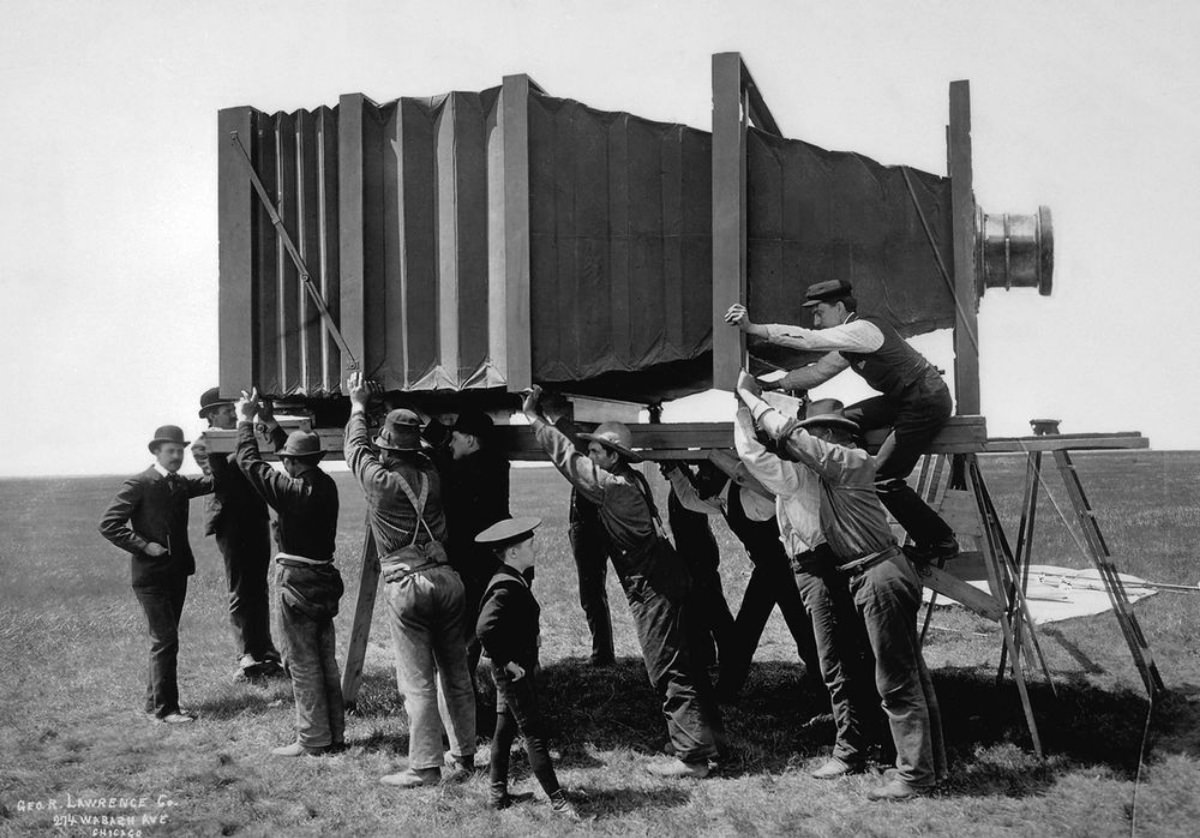
#2 A spread from the Chicago & Alton pamphlet, “The Largest Photograph in the World of the Handsomest Train in the World,” including Lawrence’s image of the train.
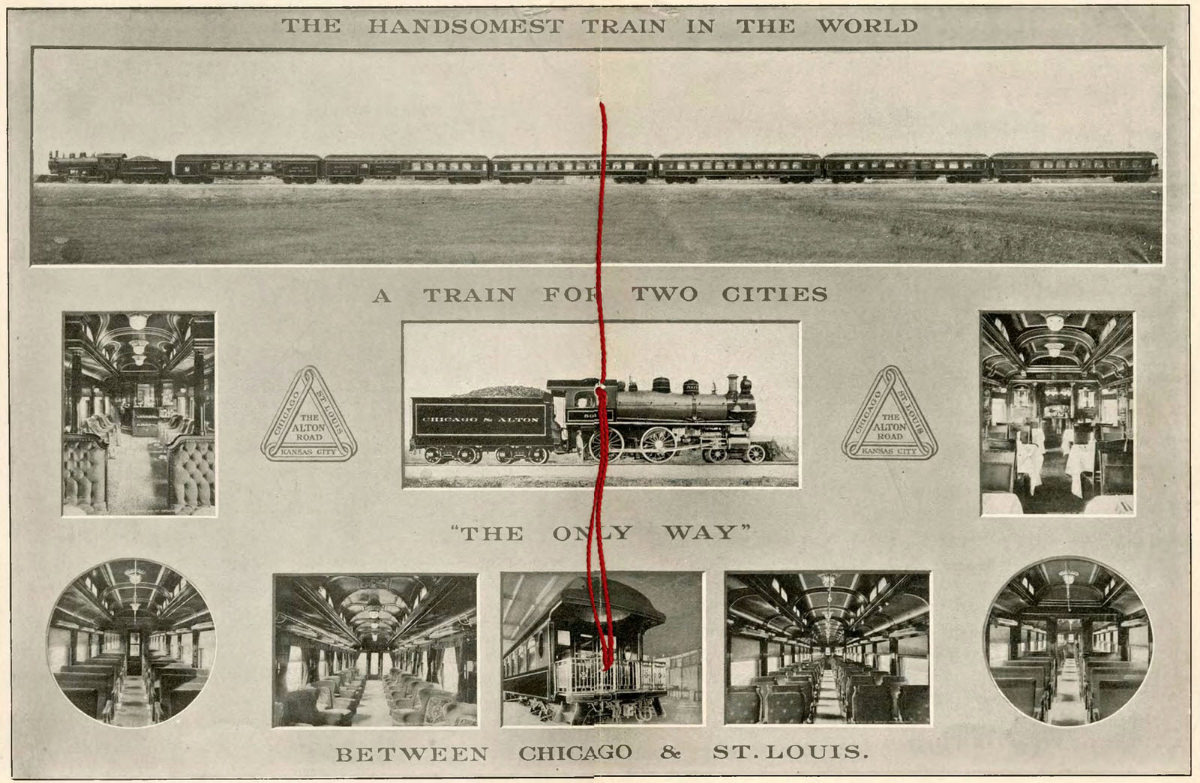
#3 J. A. Anderson (left) overseeing mammoth camera construction.
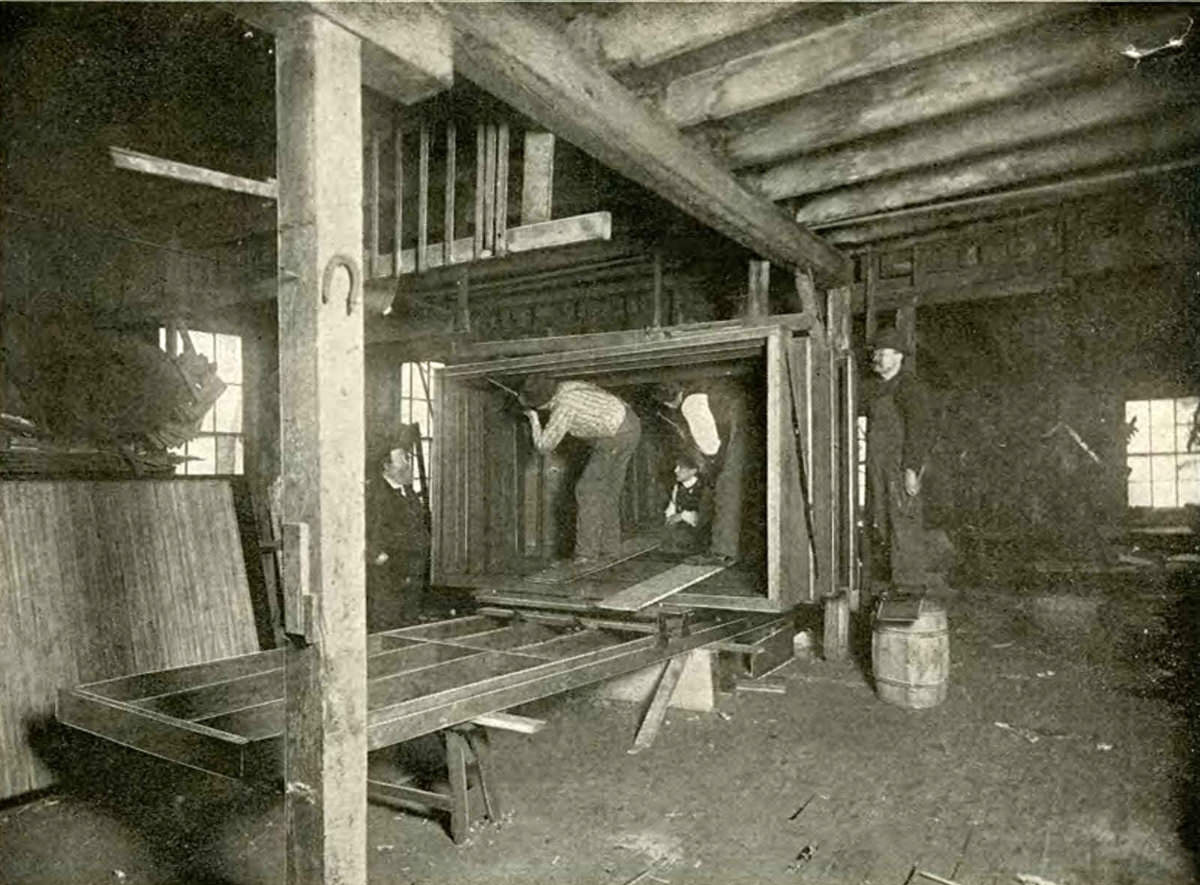
#4 Transporting the camera.
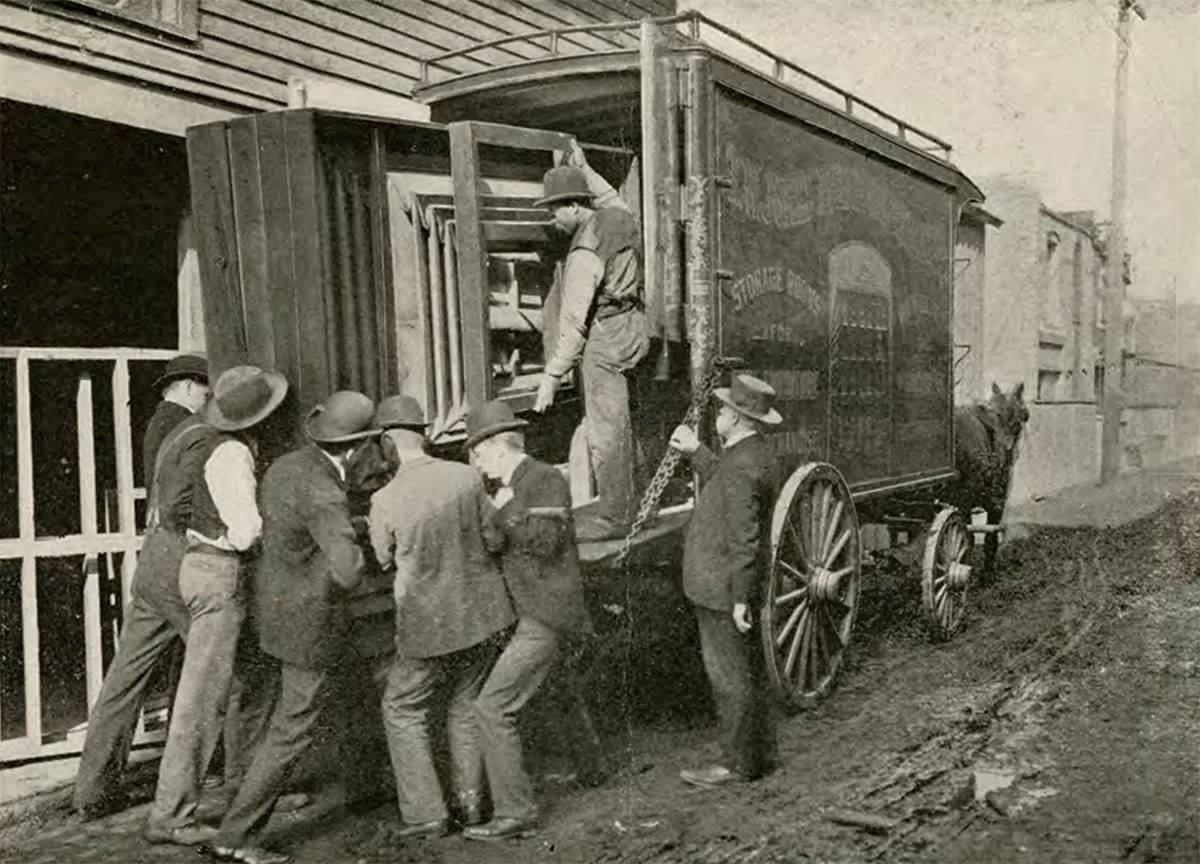
#5 Loading the camera onto the train.
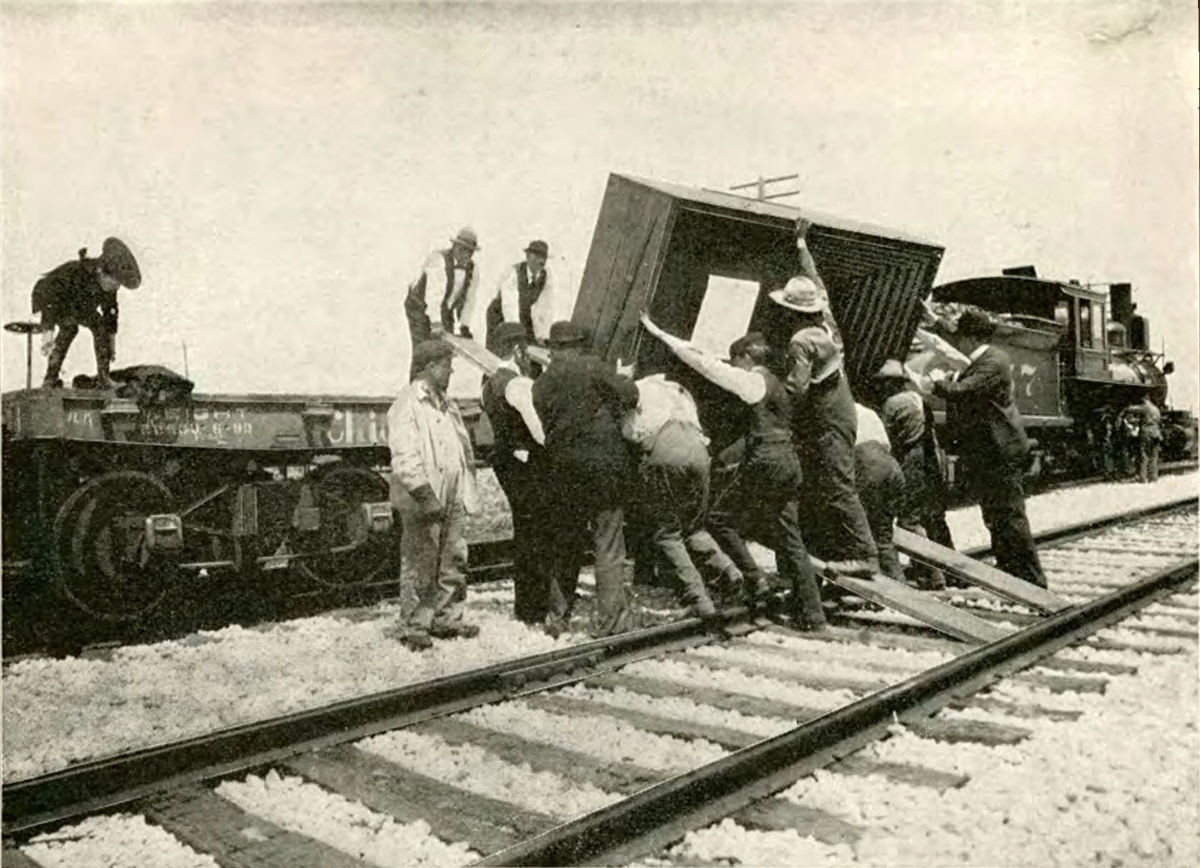
#6 The camera getting transported to the shoot.
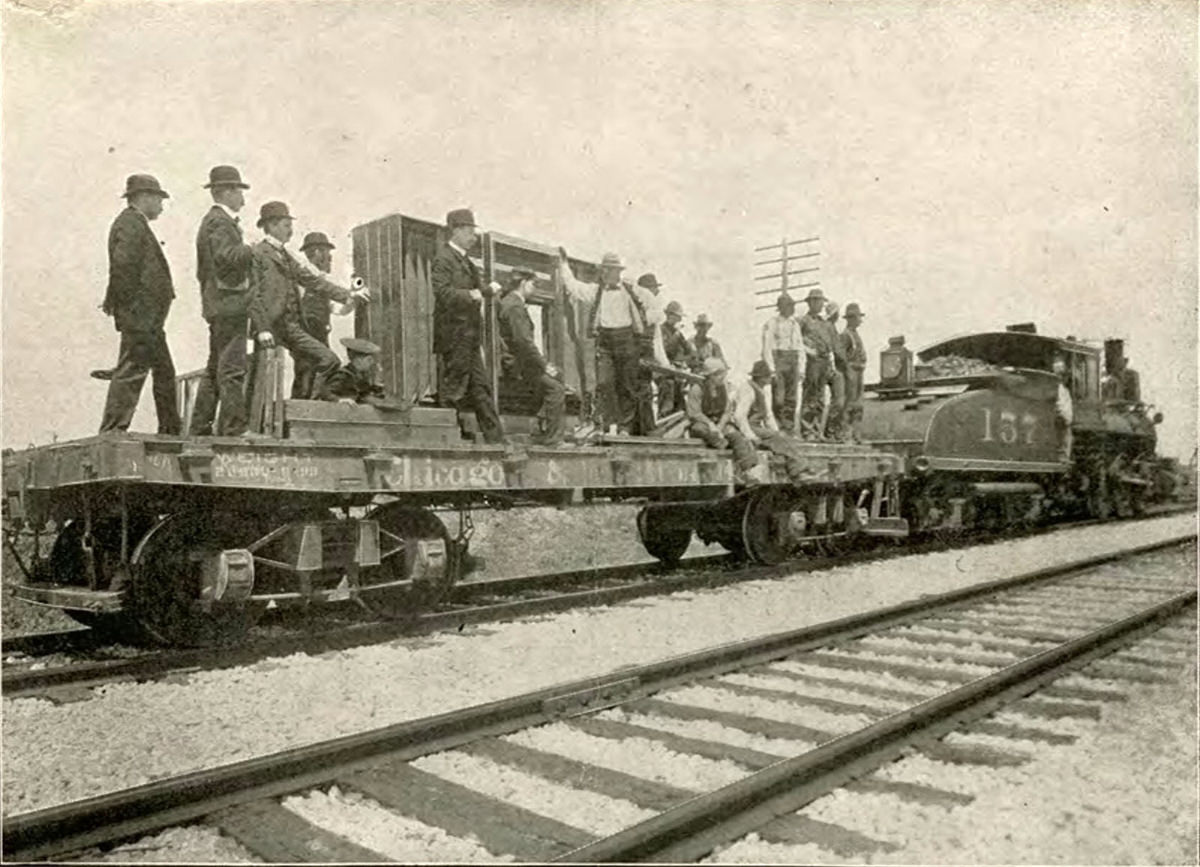
#7 Setting up the camera.
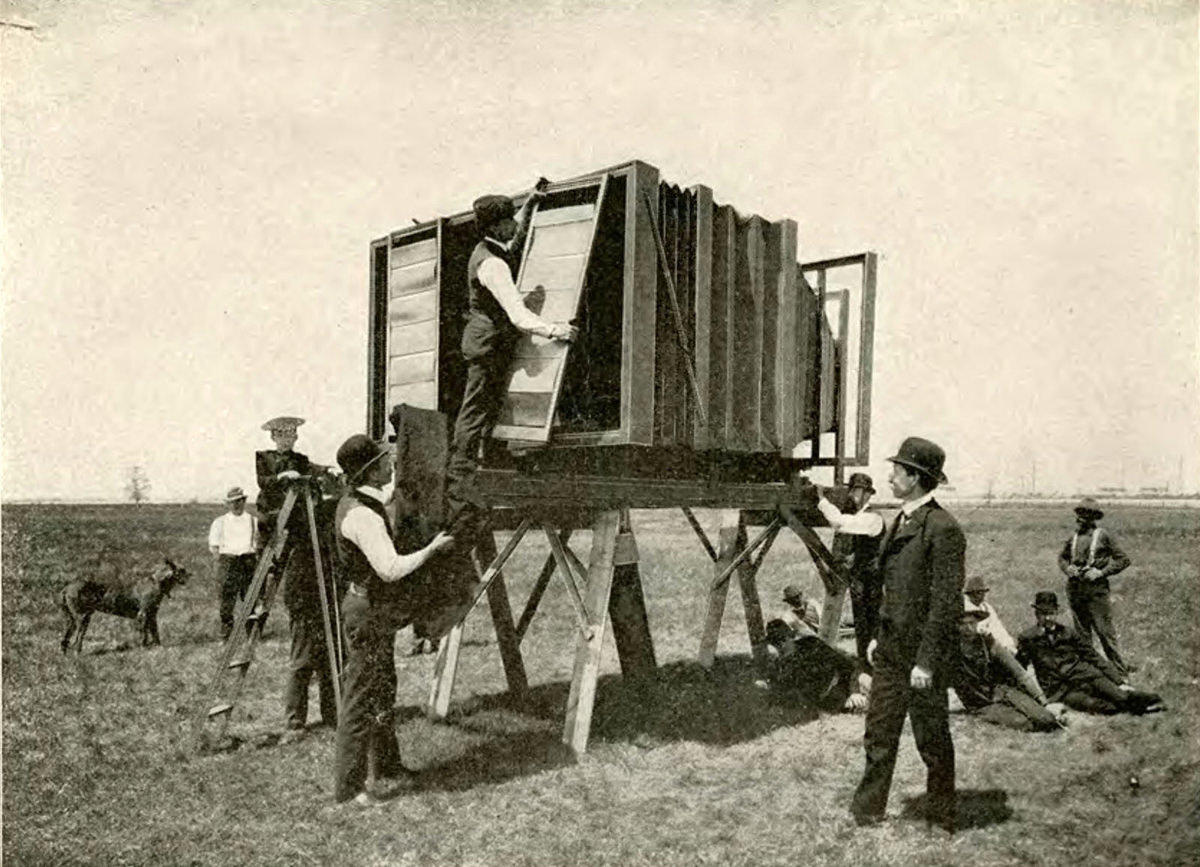
#8 Adjusting the bellows.
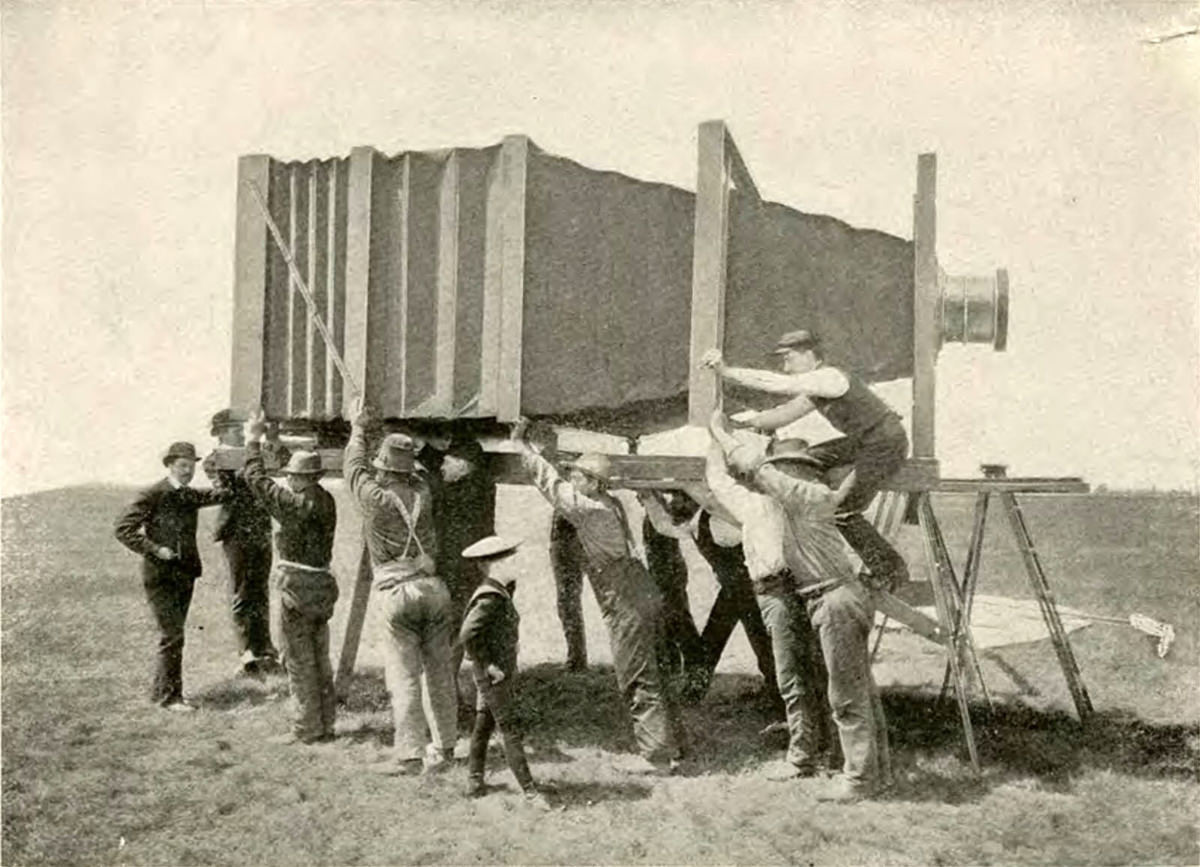
#9 Shooting the 2.5-minute exposure.
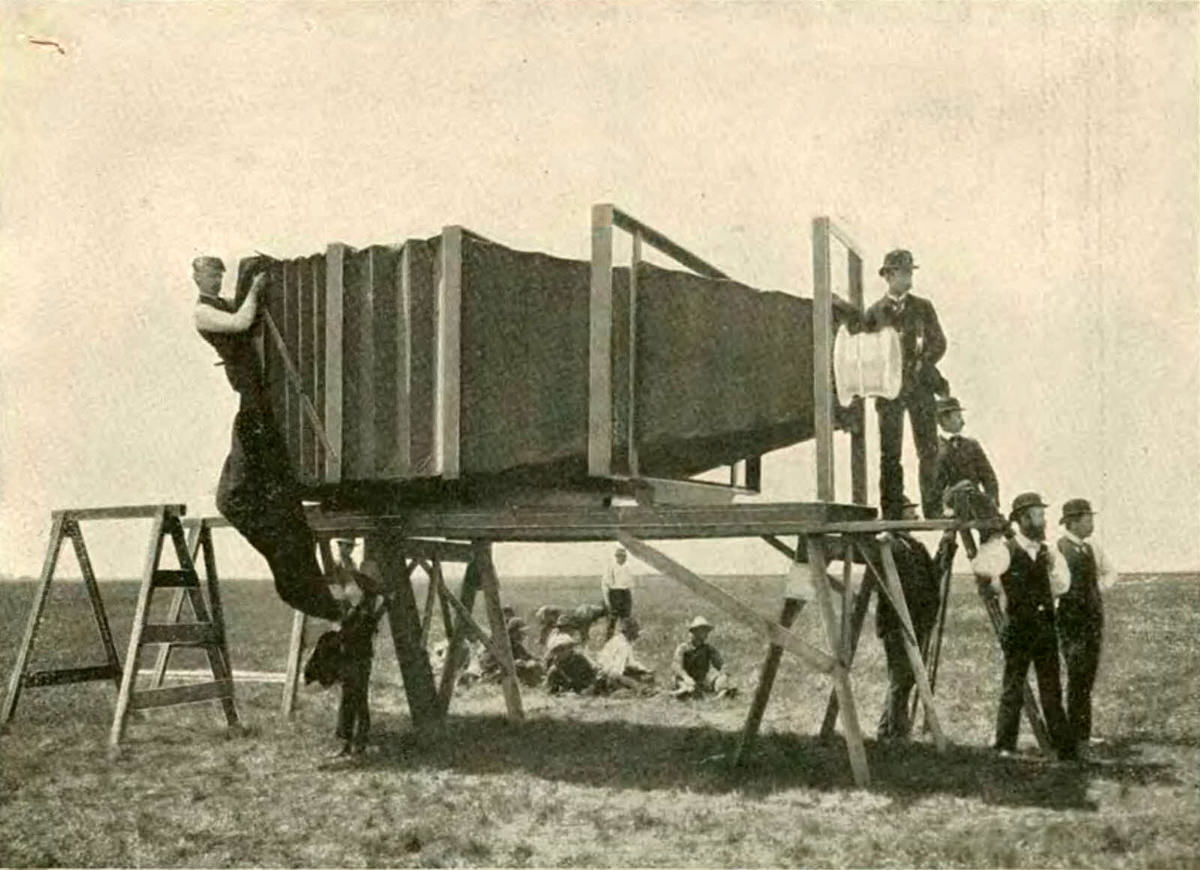
Later, using a reported 10 gallons of chemicals, Lawrence developed a clear, crisp, 8-foot-long photograph of the Alton Limited.
#10 The Alton Limited train shot by George R. Lawrence.




Writes a whole article about a huge camera built to take a massive photo of a train, includes only a low res version of the train photo.
Here is a somewhat higher resolution version of the photo:
https://upload.wikimedia.org/wikipedia/commons/d/da/George_Raymond_Lawrence_Alton_Limited_train.jpg
That little flyer was the only thing the photo was ever used for
Three full size 8′ x 4.5′ prints were made – all three were major exhibits around the world, notably for an exhibition in Paris.
Who’s a handsome train
Takes the shot. Develops. Forgot to take out the dark slide…
With that little camera!?
Who left the lens cap on